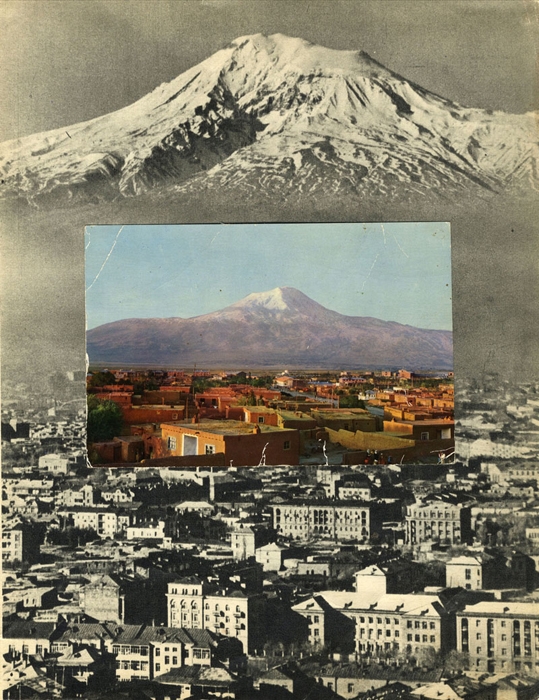ArtReview sent a questionnaire to artists and curators exhibiting in and curating the various national pavilions of the 2015 Venice Biennale, the responses to which will be published daily in the lead-up to the Venice Biennale opening.
Adelina Cüberyan von Fürstenberg is curating the Armenian pavilion. The Pavilion is located on The Island of San Lazzaro degli Armeni.
What can you tell us about your exhibition plans for Venice?
The curatorial concept of the National Pavilion of Armenia is related to its title Armenity and to the selection of 16 artists from the Armenian diaspora around the world. ‘Armenity’ – coming form Arménité in French – is a notion that the young generation of Armenians use to express the particular characteristics of the grandchildren of the survivors of the Armenian Genocide. This includes a state of constant flux, a diversity of self-definition, and a modern and subjective sense of being-in-the-world.
For the selected artists, it implies naturally to work on the notion of displacement and territory, ethos and resilience, all aspects related to a diaspora. Regardless of their place of birth, each of the artists of Armenity carries the memory of its origin and culture and transcends from the notions of territory, borders and geography. Their ‘Armenity’ reminds us of how, in very difficult conditions, today’s emigrants have to manage to adapt and find a new place, building a new life for themselves.
Are you approaching this show in a different way as to how you would a ‘normal’ exhibition?
I finalised my choices on artists whose interpretations were closer to my experience in contemporary art and my strong belief in art as instrument of awareness. With this show I don’t wish to promote this or that artist, I wish to promote awareness. Therefore I invited many and not one only.
I believe that whether they were born in Beirut, Lyon, Los Angeles, or Yerevan, and wherever they may reside today, these artists and their innovative and sensitive works can transmit the spirit of ‘Armenity’ to the large public of the Biennale, who mostly ignores our culture, our language, our alphabet and history.
What does it mean to ‘represent’ your country? Do you find it an honour or problematic?
I was pleased to know that the Ministry of Culture of the Republic of Armenia was going to officially dedicate its pavilion to the artists of the Armenian diaspora and on the Island of San Lazzaro. I accepted it as a great honour and an immense responsibility being in the context of such a symbolic year of 2015. The Biennale of Venice has always been a mirror of the present time and the 56th edition falls precisely in 2015, coinciding with the 100th anniversary of the Armenian Genocide.
How are you approaching the different audiences who come to Venice – the masses of artist peers, gallerists, curators and critics concentrated around the opening and the general public who come through over the following months?
From the first moment that the project became public, end of January 2015, we felt already lots of expectations and interest. Announcements, interviews, news and reviews started immediately, from magazines in the USA and in Europe. Even in Turkey and Armenia. This is very encouraging. I see a very big attention on our pavilion for different and equally good reasons.
What are your earliest or best memories of the biennale?
I’m familiar with the Venice Biennale since 1993 when I received an award for my Direction of the Magasin – National Center of Contemporary Art of Grenoble and its School of Curators. I’m also familiar with the spaces of San Lazzaro Island where during the Biennale of 1990, I curated a solo show of Sarkis, followed by shows dedicated to Robert Rauschenberg in 1997, to Jannis Kounellis in 2005 and in 2007 to Joseph Kosuth.
You’ll no doubt be very busy, but what else are you looking forward to seeing?
The main exhibition All the World’s Futures by Okwui Enwezor, Joan Jonas at the USA Pavilion, Maria Papadimitriou at Greek Pavilion, Sarah Lucas at the UK Pavlion, and many of the collateral exhibitions as well Kara Walker’s Norma at the Fenice, a must!!
How does a having a pavilion in Venice affect the art scene in your home country?
I believe that the National pavilion of Armenia, being open to artists coming from more then 16 countries, will be for sure followed by the art scene of those countries. Moreover it will be the occasion for the art scene in Armenia to know about the works of the Armenian artists from the diaspora and eventually build a permanent dialogue and collaboration.
Read all responses to the Venice Questionnaire 2015 edition published so far
Read all 30 responses to the Venice Questionnaire 2013 edition
Online exclusive published on 24 April 2015.
